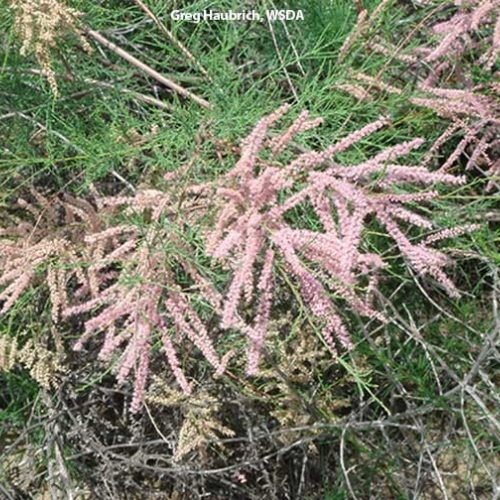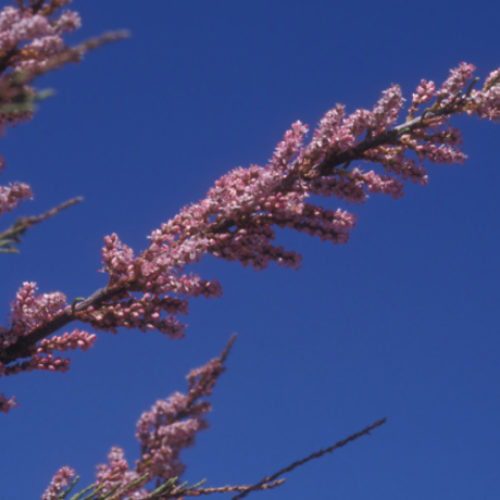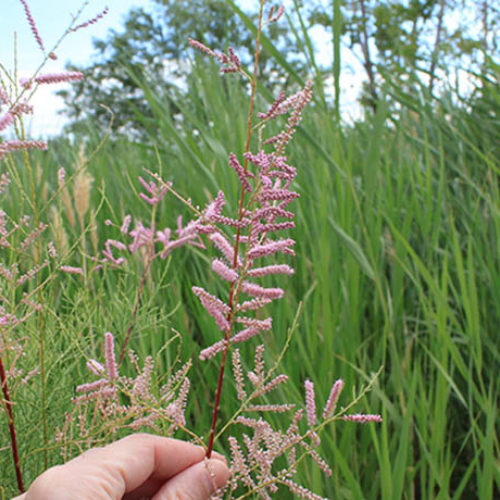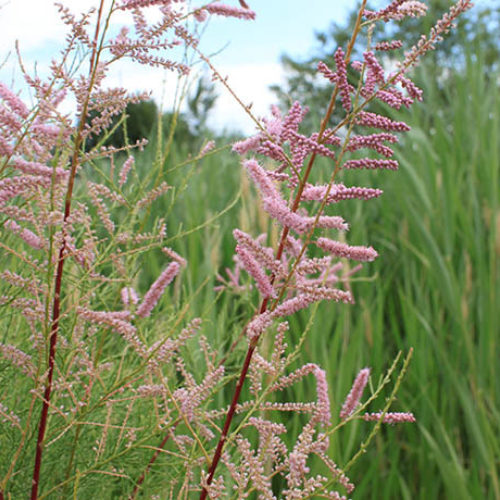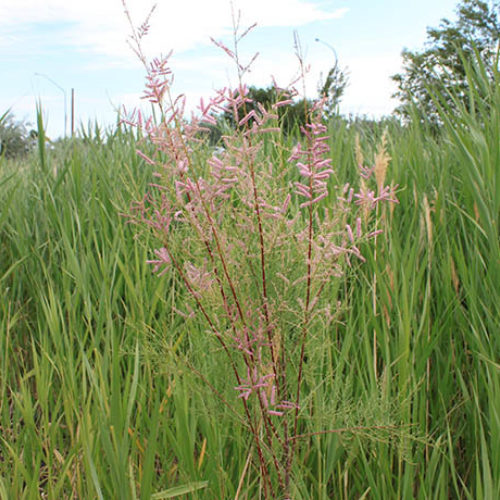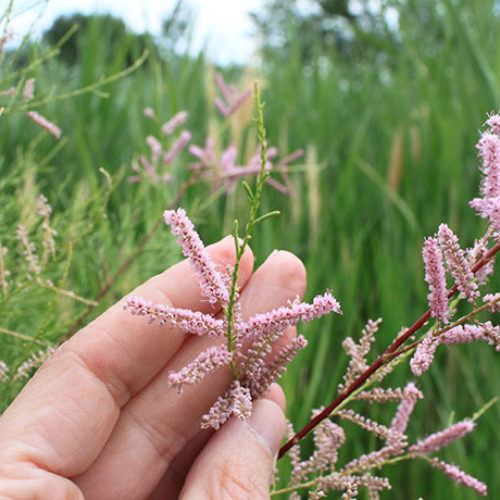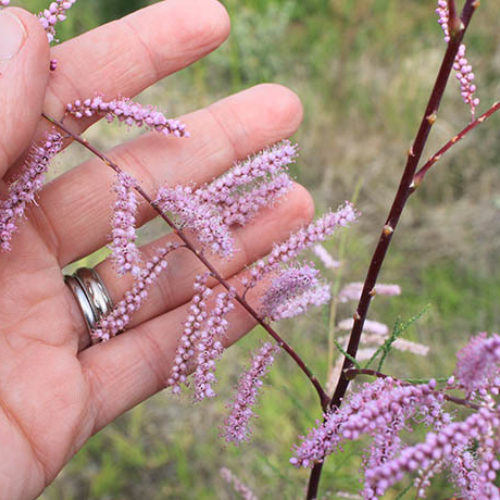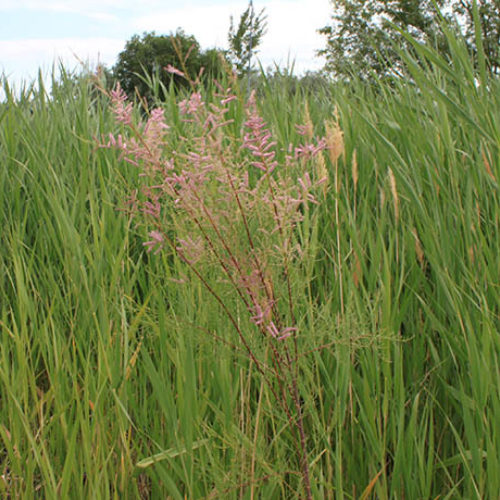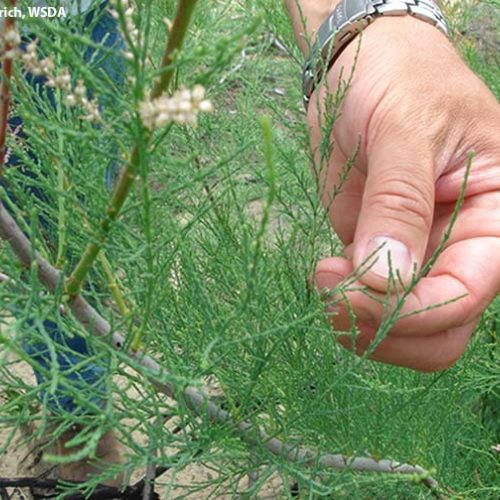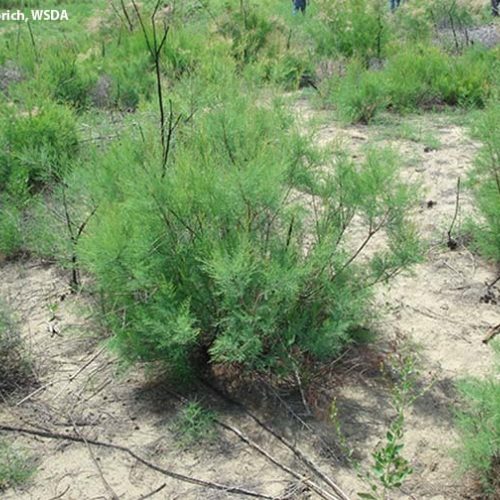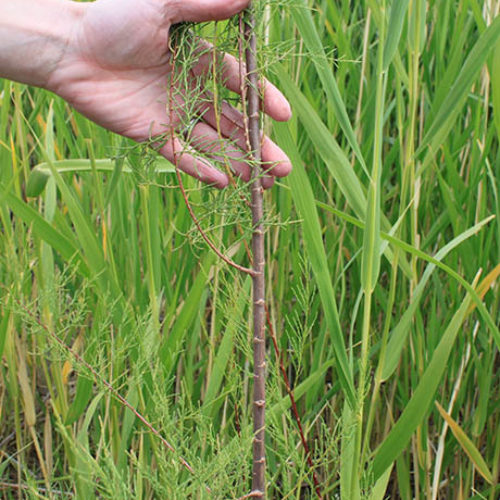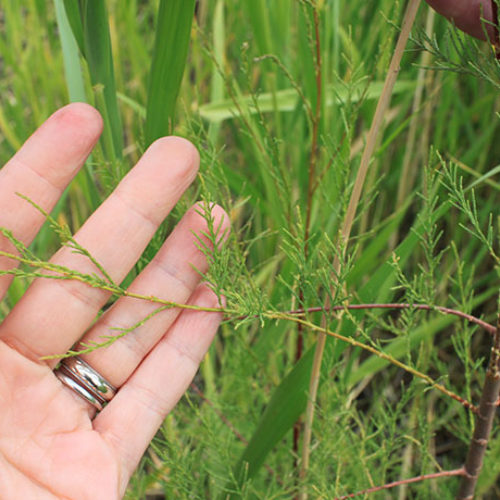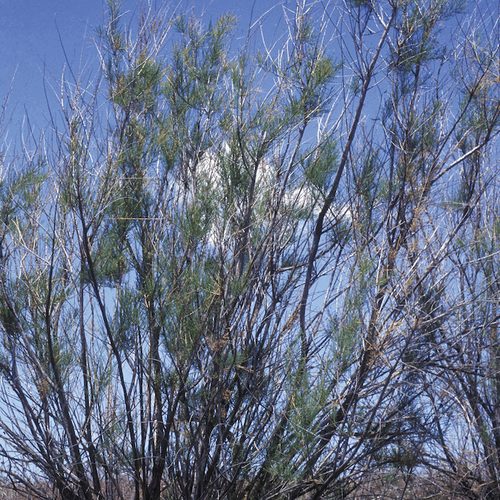Saltcedar
Tamarix ramosissima
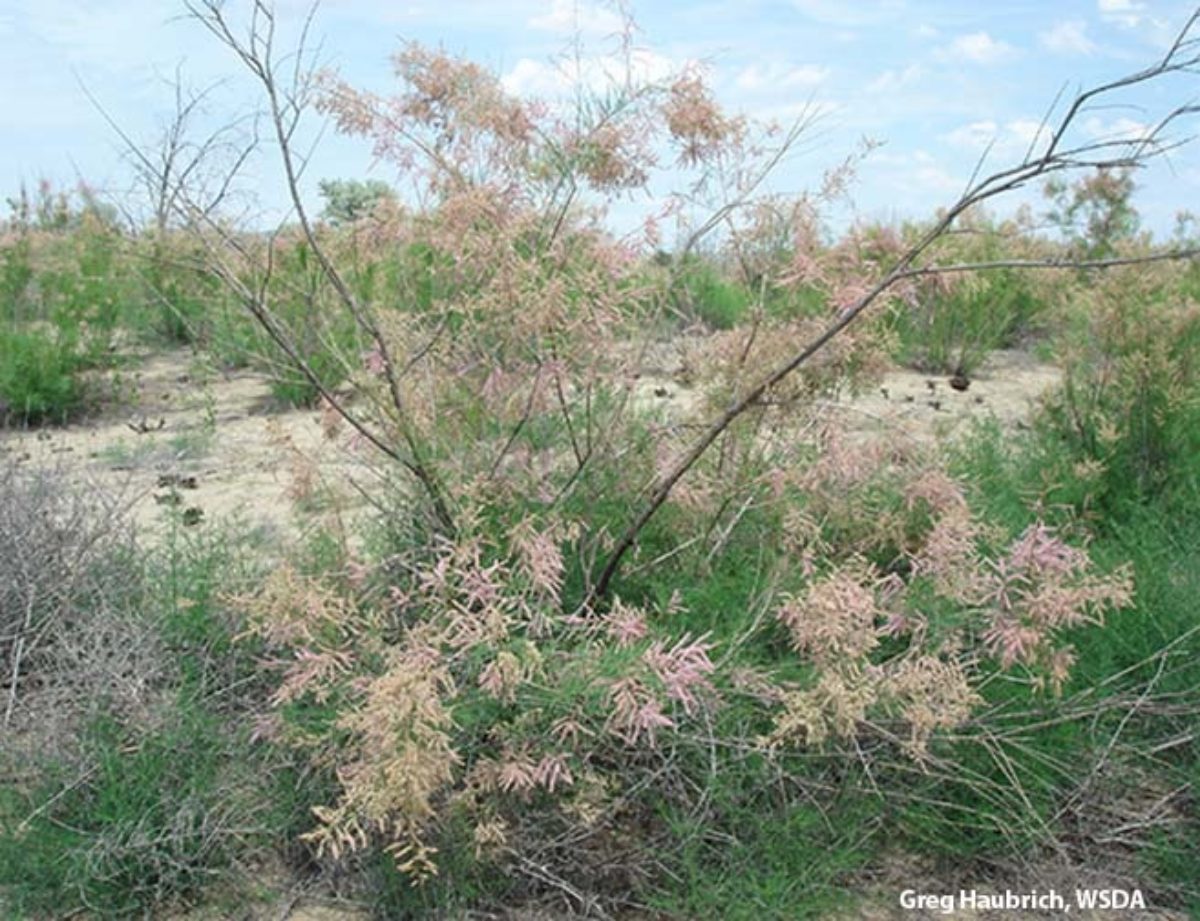
Family: Tamaricaceae
Other Common Names: pink tamarisk
Weed class: B
Year Listed: 1999
Native to: Asia and Europe
Is this Weed Toxic?:
not known to be
Legal listings:
This plant is also on the Washington State quarantine list. It is prohibited to transport, buy, sell, offer for sale, or distribute plants or plant parts of quarantined species into or within the state of Washington or to sell, offer for sale, or distribute seed packets of seed, flower seed blends, or wildflower mixes of quarantined species into or within the state of Washington. Please see WAC 16-752 for more information on the quarantine list. For questions about the quarantine list, contact the Washington State Department of Agriculture's Plant Services Program at (360) 902-1874 or email PlantServices@agr.wa.gov.
Why Is It a Noxious Weed?
It is an aggressive colonizer that is able to adapt to a variety of habitats. It forms monotypic stands and secretes salt that forms a crust above and below ground that inhibits survival of other plants. It absorbs an enormous amount of water.
How would I identify it?
General Description
Saltcedar is a spreading shrub or small tree reaching 5 to 20 feet tall.
Flower Description
Flowers are pale pink to white, small and arranged in spike like racemes. Distinct petals and sepals occur in fours or fives.
Leaf description
Leaves are small, alternate and scale-like.
Stem description
Stems have numerous branches.
Fruit Seed Description
Saltcedar forms dry capsules that contain many seeds.
May Be Confused With
Small-flower tamarisk (Tamarix parviflora), is also a non-native shrub typically found in eastern Washington and has flowers with 4 sepals, 4 petals, and 4 stamens, while saltcedar (Tamarix ramosissima) has flowers with 5 sepals, 5 petals, and 5 stamens.
Where does it grow?
Saltcedar can adapt to a variety of habitats. It is commonly found in moist soils and areas that are seasonally saturated at the surface. Please click here to see a county level distribution map of saltcedar in Washington.
How Does it Reproduce?
Saltcedar spreads by seed and also re-sprouts vigorously from roots if the top portion of the plant is damaged or removed. It can also readily establish from cuttings when buried in moist soil.
How Do I Control It?
General Control Strategy
Saltcedar can be difficult to control because of its ability to resprout from roots. Effective control efforts utilize a combination of control methods.
Mechanical Control
Because of saltcedar's ability to resprout from roots, many mechanical methods are largely unsuccessful. Root plowing is possible if plowed 13.8 inches to 23.6 inches deep with a cutting blade equipped with fins to pull up roots and buried stems, but this method also destroys other vegetation as well.
Cultural Control
.
Biological Control
The saltcedar leaf beetle Diorhabda elongata adults and larvae feed on saltcedar foliage. Currently this beetle is not available in Washington. For more information about biological control of saltcedar, please visit the WSU Extension Integrated Weed Control Project.
Herbicide Control
Herbicide information is currently not included in the PNW Weed Management Handbook for saltcedar but check back as this resource is continually being updated. See the additional links below for information or contact your county noxious weed coordinator.
For More Information
See our Written Findings for more information about saltcedar (Tamarix ramosissima).
Report on saltcedar from the book Weed Control in Natural Areas in the Western United States
Asotin County NWCB Fact Sheet on saltcedar
Stevens County NWCB Fact Sheet on saltcedar



